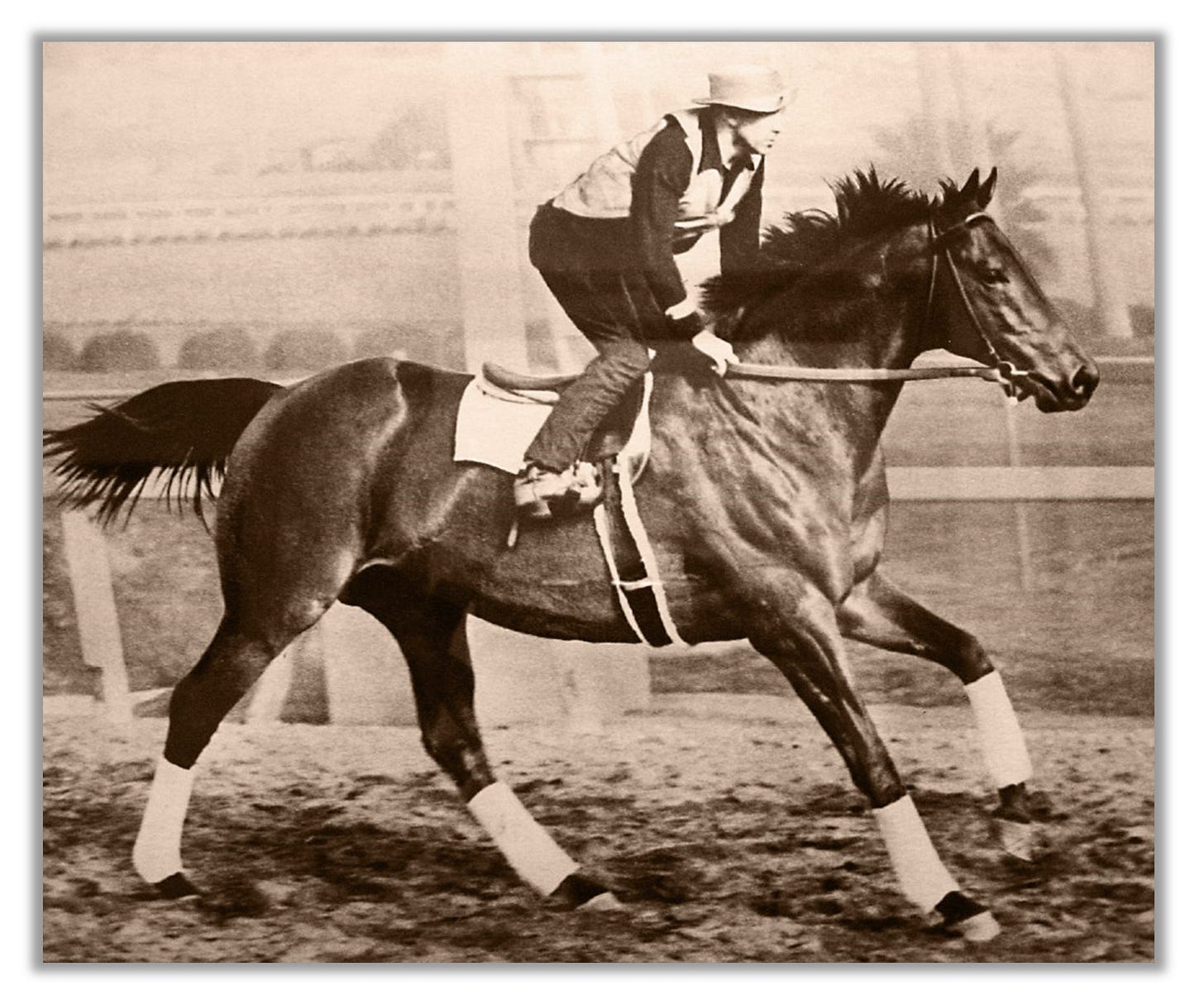TDIH: Seabiscuit
An underdog digging deep and pulling out victory. What a very AMERICAN story.
At about this time in 1938, the “race of the century” is held at Pimlico Race Course. The contest between two thoroughbred racing horses—Seabiscuit and War Admiral—gripped the nation in a way that might surprise modern Americans.
The country was then in the midst of the Great Depression, and horse racing was a welcome distraction. Moreover, this particular race featured a faceoff between the old, Eastern establishment and the newer thoroughbred community in the West.
Would the establishment win? Or would an upstart take the victory?
Both horses were descendants of the great stallion, Man o’ War, but the similarities ended there. War Admiral hailed from the East. He’d won the Triple Crown in 1937, and he’d been voted American Horse of the Year. By contrast, Seabiscuit had been acquired by western businessman Charles Howard for only $8,000 because he was thought too lazy to be a great racehorse.
Seabiscuit could have spent the remainder of his days as breeding stock but for Howard’s trainer Tom Smith, who saw the horse’s potential. He took the horse under his wing and soon had Seabiscuit winning victory after victory.
“He was the horse from the other side of the tracks who became a champion,” his biographer Laura Hillenbrand explains.
Howard soon wanted a race featuring his horse versus War Admiral, but War Admiral’s owner was less enthusiastic. “Horse racing in the West was considered second rate,” Hillenbrand explains. “War Admiral’s owner did not consider it dignified to have his horse run against a horse like Seabiscuit.”
Nevertheless, public pressure mounted. Americans wanted to see the showdown. A deal was finally made: The two horses would meet at Pimlico on November 1, 1938.
Most expected War Admiral to win. He was habitually quick out of the gate, whereas Seabiscuit started slower. The owners agreed to a gateless walk-up, which favored War Admiral. A bell would signal the start of the race.
Maybe you won’t be surprised to hear that Smith began secretly training Seabiscuit to react to a bell?
Seabiscuit was at another disadvantage: His normal jockey, Red Pollard, had been injured. His new jockey, George Woolf, visited Pollard in the hospital, seeking guidance. Pollard’s advice was surprising: Seize the lead fast but then hold Seabiscuit in check. Allow War Admiral to catch up.
“Maybe you would call it a kind of horse psychology,” Pollard said, according to Hillenbrand. “Once a horse gives Seabiscuit the old look-in-the-eye, he begins to run to parts unknown. He might loaf sometimes when he’s in front and thinks he’s got a race in the bag. But he gets gamer and gamer the tougher it gets.”
Pollard was sure that Seabiscuit could dig deeper than War Admiral. If Seabiscuit looked War Admiral in the eye and saw the challenge, he’d win.
On race day, Seabiscuit got off to a much faster start than expected. He took the lead, but then Woolf held him back, just as Pollard had advised.
“It was in this run, side by side, that Seabiscuit proved his superiority over the Admiral,” newspapers reported the next day. “Because when the two horses came out of this gripping drive at the top of the stretch and leveled off for home, Seabiscuit had enough left to carry on, to barrel it down to the wire. War Admiral didn’t.”
War Admiral’s jockey was stunned, later saying that War Admiral had looked Seabiscuit in the eye, “but that other horse refused to quit.”
Seabiscuit set a new track record that day, and he defeated War Admiral by four lengths. The crowd was thunderstruck.
An underdog digging deep and pulling out victory. What a very AMERICAN story, don’t you think?
Sources can always be found on my website, here.



A great story about a Great horse. "Dig deep, and overcome," as American as it gets! Thank you, Tara Ross, for remembering Seabiscuit, and his will to succeed!
That is an American story if there is one! What a great race!